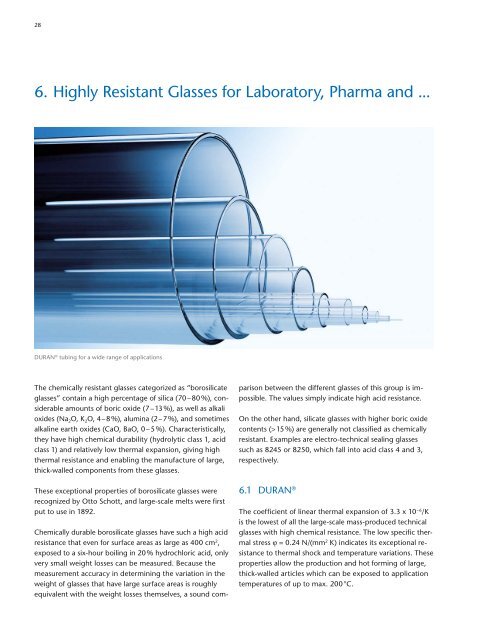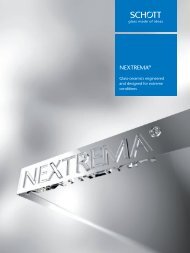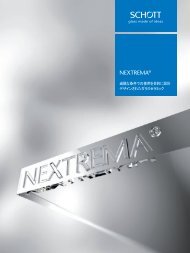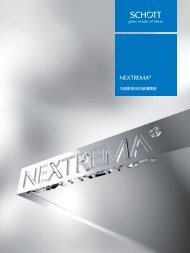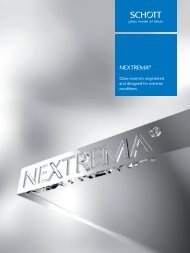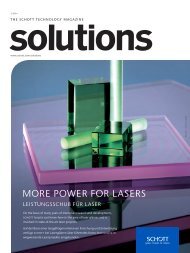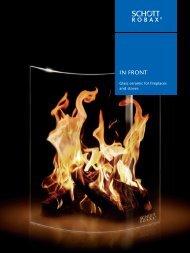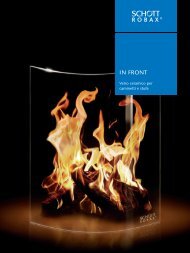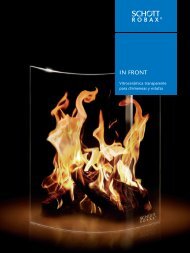SCHOTT Technical Glasses
Apart from its application in optics, glass as a technical material has exerted a formative influence on the development of important technological fields such as chemistry, pharmaceutics, automotive, optics, optoelectronics and information technology. SCHOTT Technical Glasses offers pertinent information in concise form. It contains general information for the determination and evaluation of important glass properties and also informs about specific chemical and physical characteristics and possible applications of the commercial technical glasses produced by SCHOTT. With this brochure, we hope to assist scientists, engineers, and designers in making the appropriate choice and make optimum use of SCHOTT products.
Apart from its application in optics, glass as a technical material has exerted a formative influence on the development of important technological fields such as chemistry, pharmaceutics, automotive, optics, optoelectronics and information technology. SCHOTT Technical Glasses offers pertinent information in concise form. It contains general information for the determination and evaluation of important glass properties and also informs about specific chemical and physical characteristics and possible applications of the commercial technical glasses produced by SCHOTT. With this brochure, we hope to assist scientists, engineers, and designers in making the appropriate choice and make optimum use of SCHOTT products.
Create successful ePaper yourself
Turn your PDF publications into a flip-book with our unique Google optimized e-Paper software.
28<br />
6. Highly Resistant <strong>Glasses</strong> for Laboratory, Pharma and ...<br />
DURAN ® tubing for a wide range of applications<br />
The chemically resistant glasses categorized as “borosilicate<br />
glasses” contain a high percentage of silica (70 – 80 %), considerable<br />
amounts of boric oxide (7 – 13 %), as well as alkali<br />
oxides (Na 2 O, K 2 O, 4 – 8 %), alumina (2 – 7 %), and sometimes<br />
alkaline earth oxides (CaO, BaO, 0 – 5 %). Characteristically,<br />
they have high chemical durability (hydrolytic class 1, acid<br />
class 1) and relatively low thermal expansion, giving high<br />
thermal resistance and enabling the manufacture of large,<br />
thick-walled components from these glasses.<br />
These exceptional properties of borosilicate glasses were<br />
recognized by Otto Schott, and large-scale melts were first<br />
put to use in 1892.<br />
Chemically durable borosilicate glasses have such a high acid<br />
resistance that even for surface areas as large as 400 cm 2 ,<br />
exposed to a six-hour boiling in 20 % hydrochloric acid, only<br />
very small weight losses can be measured. Because the<br />
measurement accuracy in determining the variation in the<br />
weight of glasses that have large surface areas is roughly<br />
equivalent with the weight losses themselves, a sound comparison<br />
between the different glasses of this group is impossible.<br />
The values simply indicate high acid resistance.<br />
On the other hand, silicate glasses with higher boric oxide<br />
contents (> 15 %) are generally not classified as chemically<br />
resistant. Examples are electro-technical sealing glasses<br />
such as 8245 or 8250, which fall into acid class 4 and 3,<br />
respectively.<br />
6.1 DURAN ®<br />
The coefficient of linear thermal expansion of 3.3 x 10 –6 /K<br />
is the lowest of all the large-scale mass-produced technical<br />
glasses with high chemical resistance. The low specific thermal<br />
stress φ = 0.24 N/(mm 2 K) indicates its exceptional resistance<br />
to thermal shock and temperature variations. These<br />
properties allow the production and hot forming of large,<br />
thick-walled articles which can be exposed to application<br />
temperatures of up to max. 200 °C.


